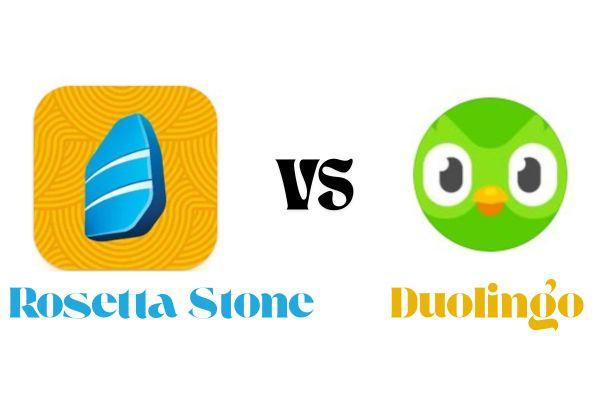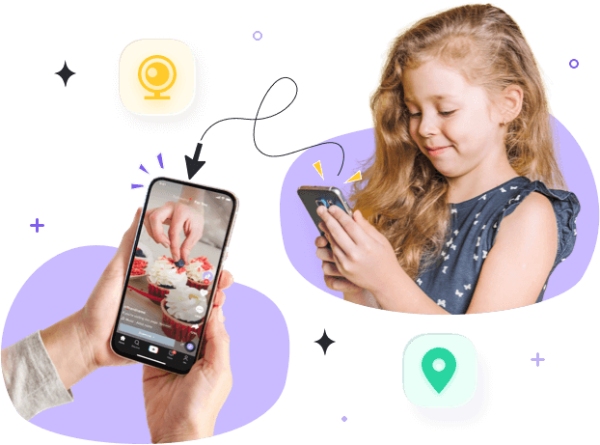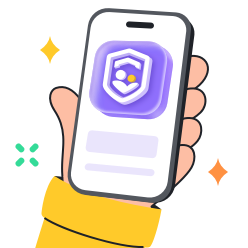Language learning apps have rocked the world! Millions of people jump into a new language journey every day and they do so with the help of apps that tell you it’s going to be fun, it’s going to be engaging and it’s going to be effective. Two names in this bustling marketplace are Rosetta Stone and Duolingo. The debate between looking for Rosetta Stone vs Duolingo means that you’ve got yourself caught in the middle of a fight between immersive, old school ways and playful, gamified ones.
Whatever where you’re starting from, whether from scratch or in building on existing abilities, you wish for the very best within your language journey. But this article offers you a full scoop of comparison of every important imperative detail of both these leading platforms.
Rosetta Stone vs Duolingo: Features comparison
The Rosetta Stone vs Duolingo debate has been taking place for a very long while now and both have no problem putting forth strong offerings. Yet each presents its unique philosophy and each will approach that audience differently. But we can break these features into pieces to get easily understand.
1. Learning methodology
The thing that we like about Rosetta Stone is the immersion. There are no heavy translation or grammar drills at the front and you immerse yourself straight into the language. What it does instead is called Dynamic Immersion. Learning involves tying words and phrases to images. It mimics how you first learned your first language as a kid. But every lesson is made so you don’t need to constantly resort to your native language for help.
However, when using Duolingo uses a gamified format which means each lesson is more of a challenge. As you progress through, you certainly will earn points and will level up and you will celebrate small victories. Each interaction in this app is full of fun. Language learning becomes a series of mini games in every session with a way of translating, matching words to pictures, and answering questions under time pressure. The way it is designed makes one feel urgent and motivated to keep moving.
2. Language choices
The range of languages you can use is different on each side. Where others tend to focus their language library on the usual European languages, Duolingo outshines with its vast library of languages. There are more than 30 available languages, from Spanish, French, and German to fictional ones such as Klingon or High Valyrian.
There is also a wide variety of languages available with Rosetta Stone. Many major languages, for example, English, Spanish, French, and Mandarin, along with a good number of others, are covered. But its aim is not high, rather that it concentrates on the dimension and quality of the language courses.
3. Target audience
So, before you choose, you of course must take into consideration who the application is meant to be utilized for. Rosetta Stone is designed for the serious language learner. It has an immersive technique which is exactly what works best with those who want a genuine, holistic experience. This app is gentle with students, professionals, and anyone who’s willing to devote his or her time to learning a language.
At the other end of the spectrum, Duolingo is for people of all learning levels. Furthermore, it is for easy travelers and individuals wanting a refresher of verbal decorum. The gamified lessons are especially appealing to younger users or to those who prefer to learn this way.
4. User interface
Rosetta Stone offers a clean, minimalist interface that feels professional. The layout is straightforward and focuses on the content itself. Every element is designed to guide you seamlessly through lessons. The visuals are consistent and uncluttered.
Duolingo, meanwhile, opts for a vibrant, playful design. Its interface bursts with colors and animations that immediately grab your attention. Each lesson looks like a fun game, complete with streaks, badges and playful icons. You navigate through a series of interactive challenges that make learning feel like you’re on an exciting quest.



Track your child’s language learning progress
Rosetta Stone vs Duolingo: Learning method
Both applications offer unique approaches to language learning that cater to different learner profiles and objectives. Learn them below:
1. Learning approach
Rosetta Stone’s approach centers on immersion. You dive into the language without overt explanations in your native tongue. Instead, you learn by context, observation, and practice. The app structures each lesson as a progression that builds on what you’ve already mastered. You associate words with images and use repetition to cement your understanding.
Duolingo’s approach is refreshingly different. You tackle a series of interactive exercises that challenge you on multiple fronts. Every lesson is broken into small, manageable segments. The focus is on fast, incremental learning with constant feedback. You encounter translation exercises, matching games and listening challenges that test your knowledge from various angles.
2. Speaking practice
You already know that speaking is the main component of language learning. Rosetta Stone kicks off with rich speaking practice. The app has an integrated feature for voice recognition which would assist you to pull into shape your pronunciation. With the system you say words and phrases aloud and receive instant feedback. It guarantees that you will start with being good at speaking confidently and correctly.
Although Duolingo offers speaking exercises, it’s less formal. One can repeat phrases and answer oral questions, but the feedback is less detailed than Rosetta Stone. The idea of gamifying lessons and seamlessly adding speaking exercises into them is what encourages you to speak up. On the broad spectrum of learning experiences, you practice pronunciation, but speed and repetition come before precision.
3. Progress tracking
When learning a new language, it is important to keep track of your progress. Staying motivated requires you to see your improvement. Rosetta Stone has report cards that offer detailed information regarding the child’s progress. Every lesson records you completing something and it’ll show you what areas to take more time on. Your feedback is clear on your strengths and weaknesses, literally. It is a data driven approach that helps in planning for study.
Duolingo’s progress tracking is equally engaging but in a social and competitive tone. The view shows how much your streak, how many points you have and your total level in a really graphical way. You play on leaderboards, play against friends and do daily goals. It keeps you constantly reminded of your progress and the friendly competition continuously drives you to want to learn more.
4. Customization
Rosetta Stone has a structured path that has some space for personalization. It also allows you to customize your learning experience as per your personal needs. You can either pick the modules that are relevant to you and what you are interested in or pay attention to the modules you want to move forward with or you are weak in.
In a playful direction, Duolingo takes customization. You choose which lessons to repeat, which topics to explore more on and you choose what to do on a daily basis. The app’s flexibility also allows you to change your focus as you wish. Whatever your goals, you can do it in Duolingo: improve your grammar, vocabulary or learning skills.
Rosetta Stone vs Duolingo: Pros and cons



Pros of Rosetta Stone
- You dive straight into the language. The Dynamic Immersion method builds your skills naturally.
- Voice recognition features give you immediate, precise feedback. You will improve your pronunciation quickly.
- Every lesson follows a well-organized sequence. You know exactly what to expect next.
- Lessons incorporate cultural nuances that enrich your learning experience.
- Detailed tracking helps you identify strengths and areas for improvement.
Cons of Rosetta Stone
- The subscription cost can be steep. You might find it less accessible if you’re on a budget.
- The lack of playful elements might make it feel more like school than fun.
- While high in quality, the selection isn’t as broad as some other platforms.
- The structured curriculum leaves less room for exploring topics that interest you beyond the prescribed sequence.
Pros of Duolingo
- You can start learning without any cost. The free version offers a great deal of content.
- Points, streaks and badges keep you motivated every day.
- You have access to over 30 languages, including some that are unique or fictional.
- The colorful design and playful interactions make learning enjoyable.
- You choose what to focus on, tailoring lessons to your needs as you go.
Cons of Duolingo
- The bite-sized lessons sometimes lack the depth you might need for full mastery.
- Voice recognition is helpful but not as comprehensive as Rosetta Stone’s system.
- The free version includes ads that may interrupt your flow.
- The focus remains on quick learning, sometimes at the expense of understanding cultural nuances.
- While fun, the gamified tracking system might not offer detailed insights into your overall proficiency.
Rosetta Stone vs Duolingo: Pricing and family plan
From a monetary point of view, how Rosetta Stone compares to Duolingo is based entirely on the prices and value for the money.
Rosetta Stone presents itself as premium. In line with its official website, however, subscription plans come at around $11.99 per month and cost $143.88, with $11.99 being charged per month. Those seeking a long term solution are able to purchase lifetime access packages, also available for only a time fee ranging approximately at $199 but because Google Play Store sometimes has higher fees, because of platform fees. The promise is of an expansive, high quality curriculum with everything required to give an expansive, high quality language learning experience, and at this price it is supposed to be justified.
Duolingo has a highly competitive, budget friendly model and is on the other hand. The free version has no restrictions except a few ads, and it gives you a full language learning experience. Duolingo Plus, with an extra cost of about $12.99 per month or roughly $83.99 per year when billed annually, is made available for users who are willing to pay for an extra experience. It also has a Family Plan, another Duolingo offering priced at around $149.99 per year that can be used by up to six users.
How to choose between Rosetta Stone and Duolingo
Now that you know the strengths and weaknesses of each app, you need practical advice on how to choose between them. Your decision depends on several personal factors and this section helps you zero in on the right option for your needs.
Consider your learning goals
You must ask yourself what you want to achieve. If you aim to become fluent, with a strong emphasis on correct pronunciation and in-depth comprehension, Rosetta Stone might be your best bet. Its structured curriculum and immersive method help you build a solid foundation. However, if you want to pick up a language quickly for travel, casual conversation or as a hobby, Duolingo’s fast-paced, game-like lessons can get you conversational without overwhelming you.
Assess your time commitment
Consider how much time you plan to dedicate each day. Rosetta Stone often requires longer, more focused sessions. If you plan to sit down for a 30- to 45-minute session at a time, you’ll benefit from its immersive lessons. Duolingo is perfect if you only have 5 to 10 minutes at a time. The bite-sized lessons allow you to learn on the move, making it ideal for busy schedules.
Evaluate your learning style
Your learning style is crucial. If you thrive on a guided, structured experience and appreciate detailed feedback, Rosetta Stone’s method might work better for you. The immersion technique and comprehensive progress reports support a steady, methodical approach. Alternatively, if you prefer a playful, competitive learning environment that rewards you for quick wins, Duolingo’s gamified system might keep you engaged every day.
Consider your budget
You need to be realistic about your financial commitment. Rosetta Stone often comes with a higher price tag due to its premium content and advanced features. If you are willing to invest more money for a robust, immersive learning experience, the cost might be justified. Duolingo’s free version and affordable premium plan offer a lower-cost alternative. You get flexibility in spending, especially if you want to experiment with language learning without a big upfront investment.
Bonus: Track your child’s language learning progress



Parents have a very special and important role in their child’s learning process. And while it’s not enough to simply allow your child to play around with a language app, you need to be able to check in on their progress, any problems they encounter and how much time they spend on the devices, among other things. A reliable parental control tool such as FlashGet Kids can be your answer to this issue and need.
The robust tracking features are offered by FlashGet Kids. Its advanced and reliable mechanism allows you to monitor your child’s screen time and language learning sessions. The reports in the tool are also very detailed and let you know whether your child is using the language app often enough or if they have difficulty with a certain topic. FlashGet Kids guarantees you that your child’s time online is productive yet balanced. This complete approach will enable you to be sure that your child not only learns a language but is also on the road to good digital practices.
Conclusion
There’s no easy choice between Rosetta Stone and Duolingo. Having searched for Rosetta stone vs Duolingo, you get two distinct platforms offering something different to each. Rosetta Stone places an emphasis on visual cues and detailed pronunciation practice and has robust progress tracking.

